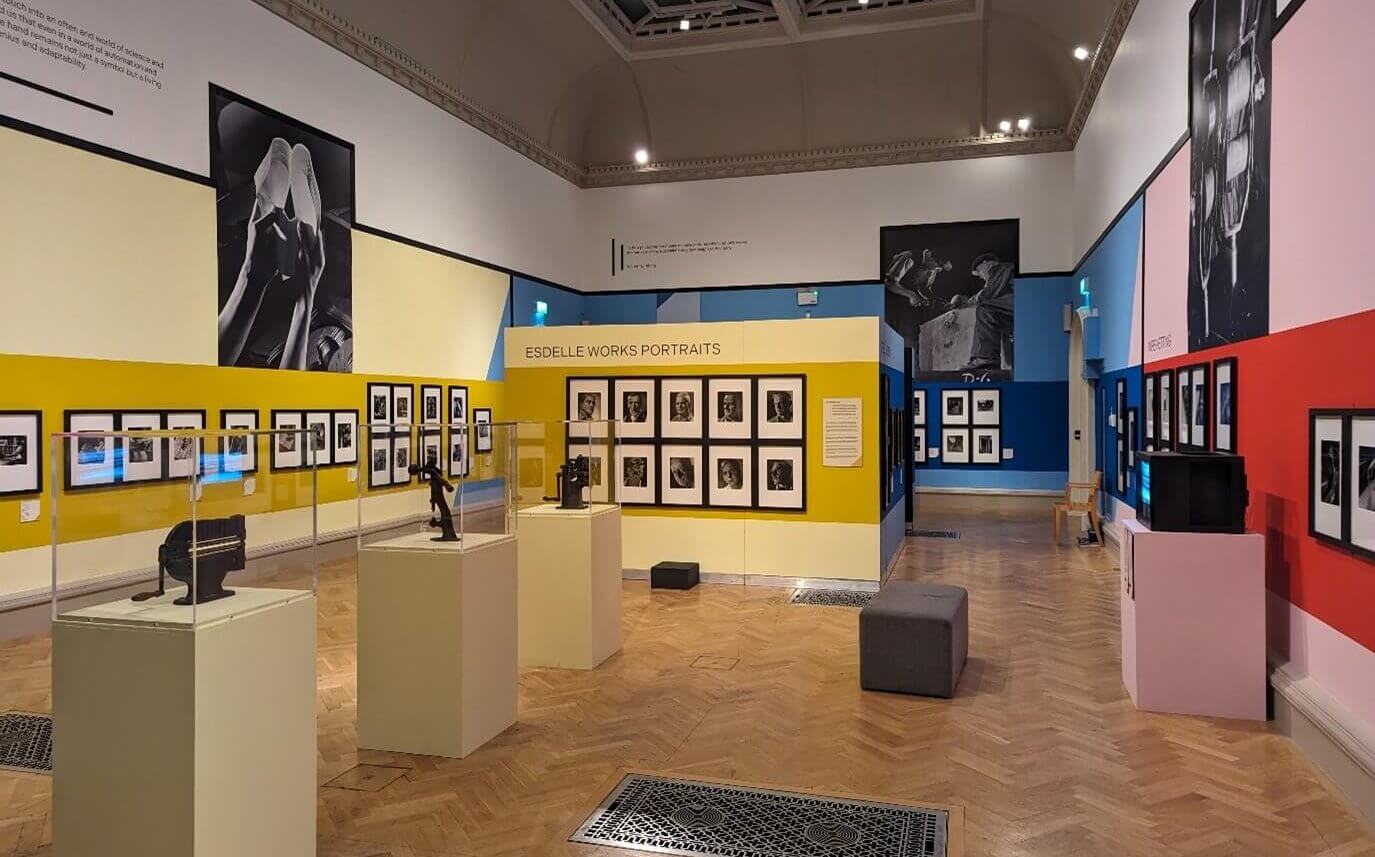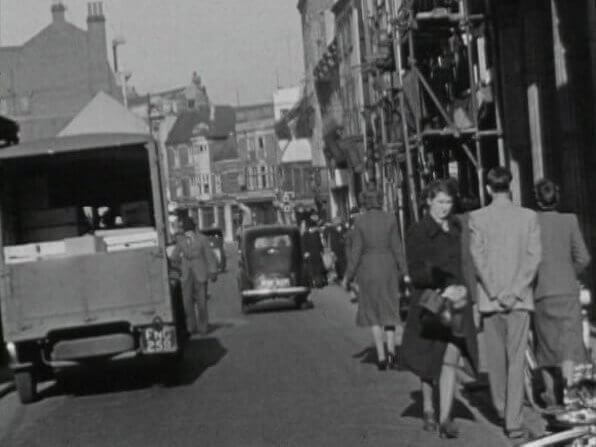
Ben Campbell, EAFA’s Graduate Intern, shares a personal reflection on their research project, looking at the use of archive film in the Norwich Works exhibition.
“You know, I messaged one of my friends one of these photos and look!” The woman I just met at the exhibition shows me her phone. It’s a text message conversation. Her friend has said that she is, in fact, in one of the photographs displayed in the Norwich Works: The Industrial Photography of Walter and Rita Nurnberg exhibition at Norwich Castle Museum.
At the time I had been visiting the exhibition at the end of my workday, tasked with taking a few notes and photographs. I paid special attention to the films displayed on two projectors and a CRT television around the exhibition. The TV, curator Dr Nick Warr later told me, met its demise a couple of weeks later by the hand of some children fiddling with its buttons. Such is the burden of the museum curator.
A car trip through history
The woman had started chatting to me while watching the film “Car Trip Through Norwich”, which depicts Norwich from the front bonnet of a police car, filmed to plan for road widening in the city. It has been by far the most popular of the four, perhaps due to the familiarity of Norwich in the film and the emotional recollection it brings up.
Even I, in my early 20s, feel a strong connection to my city’s past when watching the Norwich of over 70 years ago from such a perspective. I see black cabs trundle by the future Castle Meadow bus stop (from which I had hopped onto the 502 just that morning), catch sight of a poster on the back of a bus that says, “BOVRIL PUTS BEEF INTO YOU,” and notice that that bus had come from Earlham Fiveways, very near to my own yet-to-be-built University of East Anglia.

Cat. 908, "Car Trip Through Norwich, 1950", courtesy of Norwich City Council.
The writing begins…
Rewind to the beginning. My placement supervisor hands me a wad of magazines and books. On top, a sheet of paper lists a few websites to access for research and four films from the EAFA’s archive for me to get watching. My task? Write a well-researched and engaging project page for their website. I sit down with the pile at my newly allocated desk and begin, only a little daunted by the research before me.
I became engrossed in the research of this wonderfully artistic couple, and decided I would reinvigorate Nurnberg’s Wikipedia article a little while I was at it. The article hadn’t been properly edited for around 15 years, and sadly contained no mention at all of Rita Nurnberg. I made it my mission to correct such an error, as Nurnberg would never have been able to do what he did without her skill and ability.
An interview with Dr Warr
This placement didn’t have me simply sitting at a computer the whole time, of course. In the heritage sector? Never. I was able to interview academic director of the EAFA and curator of the exhibition, Dr Warr, about all the tiny details and curatorial flair he put into the exhibition with the aid of Dr Simon Dell and Elizabeth Elmore.
I was intrigued by the subtlety and attention to detail in Norwich Works which I would only have subconsciously noticed had Warr never told me of their existence. For example, “Car Trip Through Norwich” is accompanied with a helpful map of everywhere visited. While it evokes the feeling of going on a journey and gives a sense of space to the film, the map is, in fact, not from 1950, when the film was created. It is instead a Baedeker map of Norwich, used by the Luftwaffe to drop the very bombs on the city that eventually lead to us seeing the bombed-out buildings in the film itself.
Finding the magic of film in exhibitions
It was initially a little disorienting to focus mostly on the films used in a photography exhibition rather than the photographs themselves, but that focus has convinced me that these films should be there. They lend a sense of atmosphere and movement to the whole exhibition, with noises of the factory spilling out from the “Nestles Rowntree” film itself; there’s no need for silence nor repetitive sound effects.
I don’t know what happened with the woman’s friend who was featured in one of Nurnberg’s photographs. Perhaps I should have asked her name, silly me. However, what I do know is that exhibitions like these can tap into a deep sense of being grounded in our local history, and our families. Even to visitors from outside the local area, or those too young to remember the factories of Norwich, this exhibition was a powerful window into our past.
About Norwich Works
Norwich Works: The Industrial Photography of Walter & Rita Nurnberg ran from October 2023 until April 2024 at Norwich Castle Museum & Art Gallery. The exhibition was a partnership between Norfolk Museums Service, The University of East Anglia, Norfolk Record Office and The East Anglian Film Archive.
Read Ben’s case study about using archive films in museum exhibitions.
Header image: Inside the Norwich Works exhibition at Norwich Castle Museum & Art Gallery. Photo by Ben Campbell.



